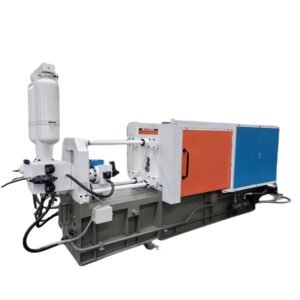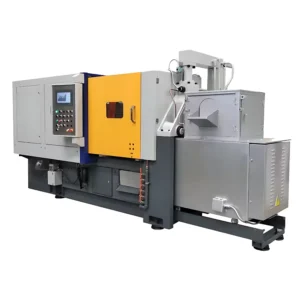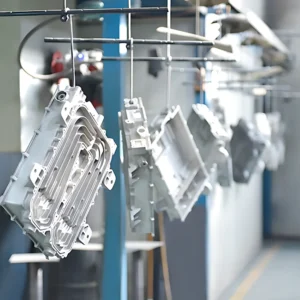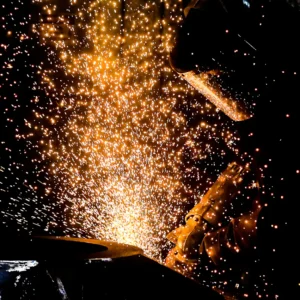Die casting and injection molding are both widely used manufacturing processes. They are used to make almost everything from precision instrument gears to automotive parts.
On the surface, die casting and injection molding appear to be similar manufacturing processes. But dig deeper and you’ll find that they are different.
Want to know which process is better for your project? Then keep reading. In this article we’ll explore the differences between the two processes, detailing their process steps, pros and cons, and guidelines for choosing the right technology for your project.
What is Die Casting?
Die casting is a metal casting process where molten metal is forced into a mold cavity under high pressure during the manufacturing process. The molds used in die casting are mainly made of hardened steel, are reusable, and are capable of producing large quantities of dimensionally accurate metal parts.
In addition, the type of die casting mold used may vary depending on the needs of different industries. Some industries may use steel or aluminum to produce parts.

Die Casting Process Steps
Die casting is a versatile and efficient metal casting process, commonly used to process engine parts, gearbox parts, seat parts, etc. The following are the process steps of die casting.
Step 1: Mold Preparation
Before casting begins, the mold needs to be cleaned to remove any residue or debris from previous castings. Once cleaned, lubricant is applied to the mold surface. This lubricant prevents the molten metal from sticking to the mold and makes it easier to remove the finished product.
Step 2: Molten Metal Injection
After heating the metal to the appropriate temperature, the metal will melt and be injected into the mold under high pressure. It is important to ensure that the metal completely fills every part of the mold during the melting process so that the ideal product shape can be obtained.
Step 3: Cooling and Solidification
Once the molten metal is poured into the mold, it quickly cools and solidifies. As the metal cools, it eventually takes on the shape of the mold, including the pre-designed patterns and textures.
Step 4: Removal and Machining
When the metal cools and solidifies, the mold is opened and the formed workpiece is removed. Then, the excess material is machined, such as burrs or gates. This machining is usually done using cutting tools or grinding. After machining, the workpiece needs to be further cleaned to remove residual debris and lubricants.
Die Casting Advantages and Disadvantages
Die casting has many advantages in processing metal parts and is the preferred product of many industrial enterprises. However, die casting itself also has disadvantages. Understanding the advantages and disadvantages will help you choose the right processing technology for your project.
Advantages of Die Casting
- Products with complex shapes, tighter tolerances and finer details can be produced.
- High production speed, suitable for mass production.
- High dimensional accuracy of parts and good surface finish.
Disadvantages of Die Casting
- High initial cost
- Limited to metals with low melting points
- Limited part size, not suitable for manufacturing large parts
What is Injection Molding
Injection molding is a manufacturing process that produces parts by injecting molten material into a mold. Unlike die casting, injection molding can be used for a variety of materials, including plastics, metals and glass. This process has a wide range of applications and can produce a variety of complex shapes with excellent surface quality.
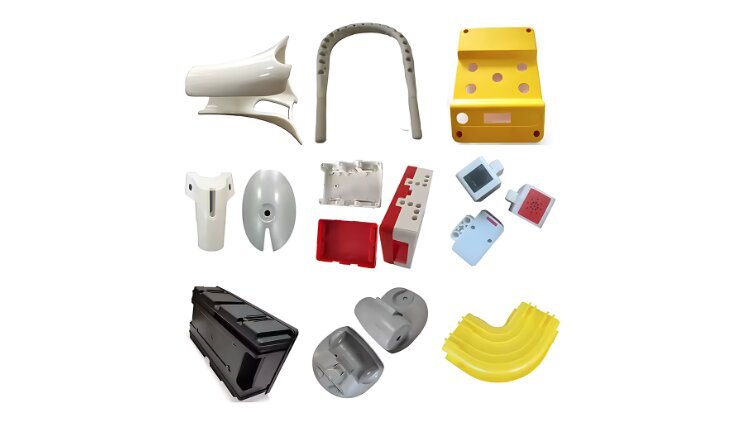
Injection Molding Process Steps
Injection molding is a widely used manufacturing process, mainly used to produce plastic products. Here are the process steps of this process:
Step 1: Prepare the Mold and Materials
First, you need to use CAD software to design the mold according to the specifications of the required part. Once the design is completed, it is carved into the required mold size and shape using CNC machining equipment. At the same time, before starting the molding process, you need to choose a suitable plastic material, such as polypropylene (PP), which is mainly used to make furniture, toys, etc. The selected plastic material is then poured into the hopper of the injection molding machine.
Step 2: Melt the Plastic
The plastic material is poured into the injection molding machine and heated until it melts. At the same time, in the mixer, the heating barrel and the rotating screw heat and mix the plastic particles until it becomes a viscous liquid. This operation ensures that the material is melted evenly.
Step 3: Injection and Cooling
The molten plastic is injected into the prepared mold under high pressure. After injection, the plastic needs to cool and solidify in the mold to form the final shape.
Step 4: Remove the Workpiece
When the plastic is completely cooled and solidified, open the mold and remove the workpiece. Some workpieces may have some excess material, which can be trimmed by trimming.
Injection Molding Advantages and Disadvantages
Injection molding is a versatile manufacturing process that has many advantages but also has some disadvantages.
Advantages of Injection Molding
- High-efficiency production
- Excellent surface quality
- Can process a variety of materials
- Suitable for processing large parts
Disadvantages of Injection Molding
- Limited to parts with uniform wall thickness
- Long setup time required for equipment preparation
- Initial setup and tooling costs can be high
Difference Between Die Casting and Injection Moulding
Die casting and injection molding are two processes for producing complex parts. Although both processes involve shaping materials in a mold, they differ greatly in terms of materials, surface finish, cost, and application areas. Here is a comparison between the two processes:
Related reading: Die Casting vs Sand Casting: Making the Right Choice.
Material Differences
Die casting mainly uses metals such as aluminum, zinc and magnesium as raw materials, which are melted under high pressure and injected into the mold. Injection molding mainly uses various plastics, which can be thermoplastics or thermosetting plastics, such as polypropylene (PP), polyethylene (PE), etc. In addition, plastic raw materials are usually less expensive than metals or other traditional materials.
Process Efficiency
Die casting is a fast process that is ideal for mass production of metal parts. This is because it cools and solidifies the metal quickly, which reduces production cycle times. While injection molding also offers fast production speeds, this is dependent on the thickness and type of plastic used, and color changes and adjustments can be easily made during production.
Precision and Tolerance
Die casting can produce high-precision, high-tolerance metal parts. It is suitable for manufacturing complex products and can ensure the high accuracy of each component. In contrast, the injection molding process can also achieve higher precision and tolerance, especially for large and complex plastic products. However, the shrinkage of plastic products has a great influence on the precision of the finished product, so it needs to be improved through reasonable mold design and processing technology.
Cost Impact
Die casting has a higher initial cost because the machinery and metal are expensive. However, its durability and speed can make up for this loss in the long-term mass production process. Since the price of plastic is lower than that of metal, the initial cost of injection molding is lower, which means that the operating cost will also be lower, thus saving a lot of plastic products.
Surface Treatment
Die-cast parts often undergo different surface treatments, including painting, electroplating, and anodizing. This can improve the corrosion resistance of metal parts.
At the same time, injection molded plastic parts can also be surface treated by coating, painting, or heat transfer to prevent the surface of plastic parts from scratching, abrasion, and chemical corrosion.
Die Casting Vs Injection Molding: How To Choose
When deciding whether to use die casting or injection molding for your manufacturing project, you need to evaluate the key factors that influence each process. Four key factors are detailed below:
Materials and Performance Requirements
If your project requires parts with high strength, heat resistance, and durability, die casting should be your choice. It excels at producing strong metal parts that can withstand high temperatures and mechanical stress.
If your project requires the use of plastic materials, choose the injection molding process. Injection molding can be processed using a variety of plastics, including ABS, polypropylene, and polycarbonate, each with different colors and textures. In addition, it is suitable for the production of products with higher design requirements.
Production Scale and Cost-Effectiveness
The initial cost is higher, but die casting is more cost-effective in a large-scale production environment.
Compared with die casting, injection molding has a lower initial cost and is more cost-effective for small and medium-sized parts production.
Complexity of Design
Suitable for producing complex metal shapes with high dimensional accuracy. However, the hardness of metal itself limits its complexity compared to plastic.
Injection molding is a better process for manufacturing highly complex and precise plastic parts. Because the flow characteristics of the melt allow it to fill various complex shapes and precise parts, it is particularly suitable for manufacturing various complex thin-walled parts.
Summary
In summary, when choosing between die casting and injection molding for your project needs, consider the pros and cons of each process, production volume, part complexity, and material requirements. Die casting is best suited for producing durable, high-precision metal parts, which are well suited for mass production. Injection molding excels at making complex, high-quality plastic parts with excellent surface finish.
If you are looking for a professional die casting service provider, you can contact us now. We provide a variety of processing services, including CNC machining, CNC turning, and other value-added services.

